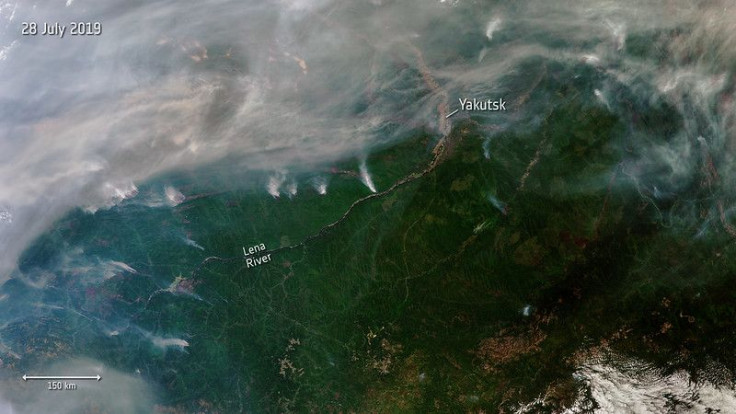Scientists Warn 'Zombie Fires' Could Be A Sign of Bigger Arctic Blazes
KEY POINTS
- Scientists found evidence of 'zombie fires' via satellite observation
- Zombie fires are remnants of the wildfires in the Arctic region in 2019
- Warm temperature and low humidity fueled the zombie fires
Scientists warned Wednesday (May 27) that last year's "zombie fire" remnants in the Arctic region might be coming to life after an unusually warm and dry spring.
Mark Parrington, a senior scientist and wildfire expert at the European Union's (EU) Copernicus Atmosphere Monitoring Service said that they had found evidence of zombie fires reigniting through satellite observations, Science Alert reported.
The hotspots, which are yet to be confirmed by ground measurements, are particularly concentrated on the areas that burned last year. Scientists warned that these zombie fires could be a sign of bigger blazes to come in the region.
In 2019, dozens of wildfires of an unprecedented intensity burned across the Arctic circle—particularly in Siberia and Alaska for weeks. These fires had released a tremendous amount of carbon emissions estimated at 50 million tons, which is equivalent to Sweden's annual emissions.
The zombie fires exacerbated global warming, which made the conditions for the blazes possible in the first place.
"We may see a cumulative effect of last year's fire season in the Arctic which will feed into the upcoming season, and could lead to large-scale and long-term fires across the same region once again," Parrington said per South China Morning Post.
The risk of wildfires increases with hot weather and low humidity, and Europe, in particular, has seen record temperatures for March and April this year.
Science Alert reported Mike Waddington, an expert on watershed ecosystems at McMaster University in Canada, said that "There has been tremendous warmth in the Arctic that will have led to a lot of drying, making the peat soils ripe to burn."
Waddington also explained that zombie fires are fires that continue to burn underground and then reignites on the surface after some time.
Embers deep in organic soils such as peatlands can spark into flames weeks, months, and even years after its ignition.
Scientists monitoring Alaska have observed a similar phenomenon, which they call "holdover fires."
The Alaska Fire Science Consortium, grouping four universities, and research institutes, reported in their Spring 2020 newsletter that fire managers noticed an increasing occurrence of fires able to survive the cold and wet boreal winter months by smoldering, and re-emerging in the subsequent spring.
Last year's zombie fires were fueled by extreme heat. Parts of Siberia and Alaska were up to 10 degrees Celsius warmer than normal for weeks at a time.

© Copyright IBTimes 2024. All rights reserved.





















